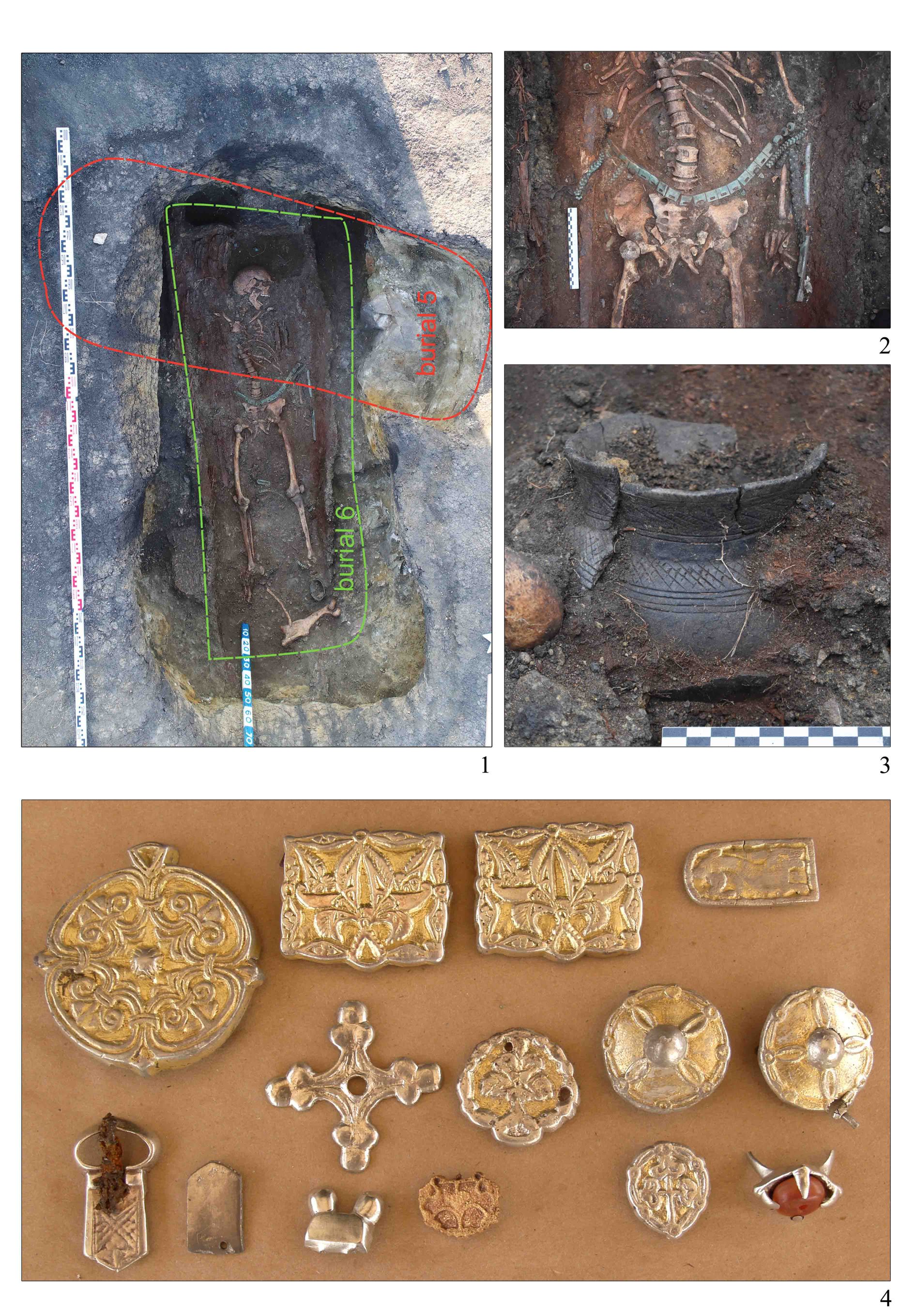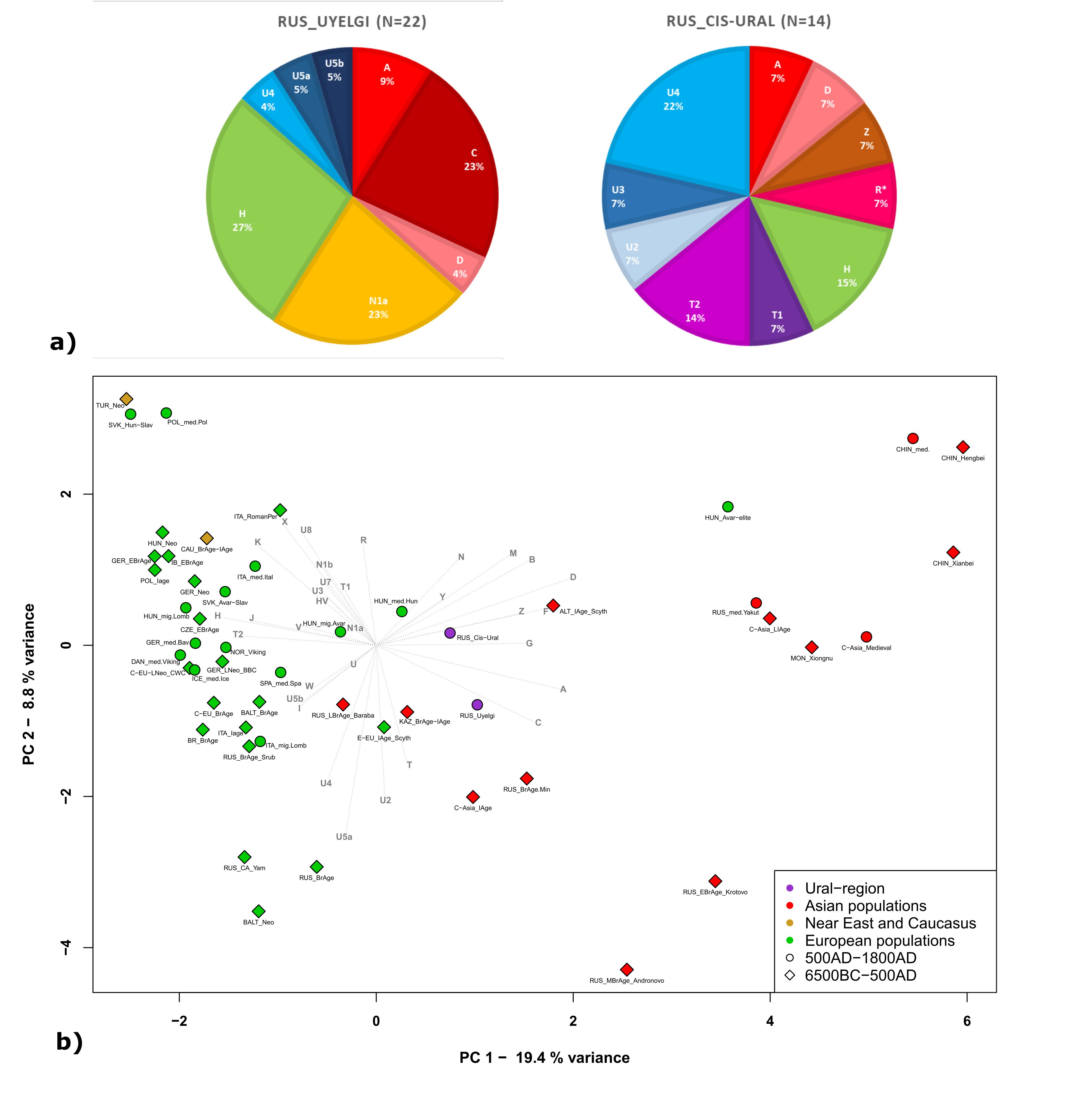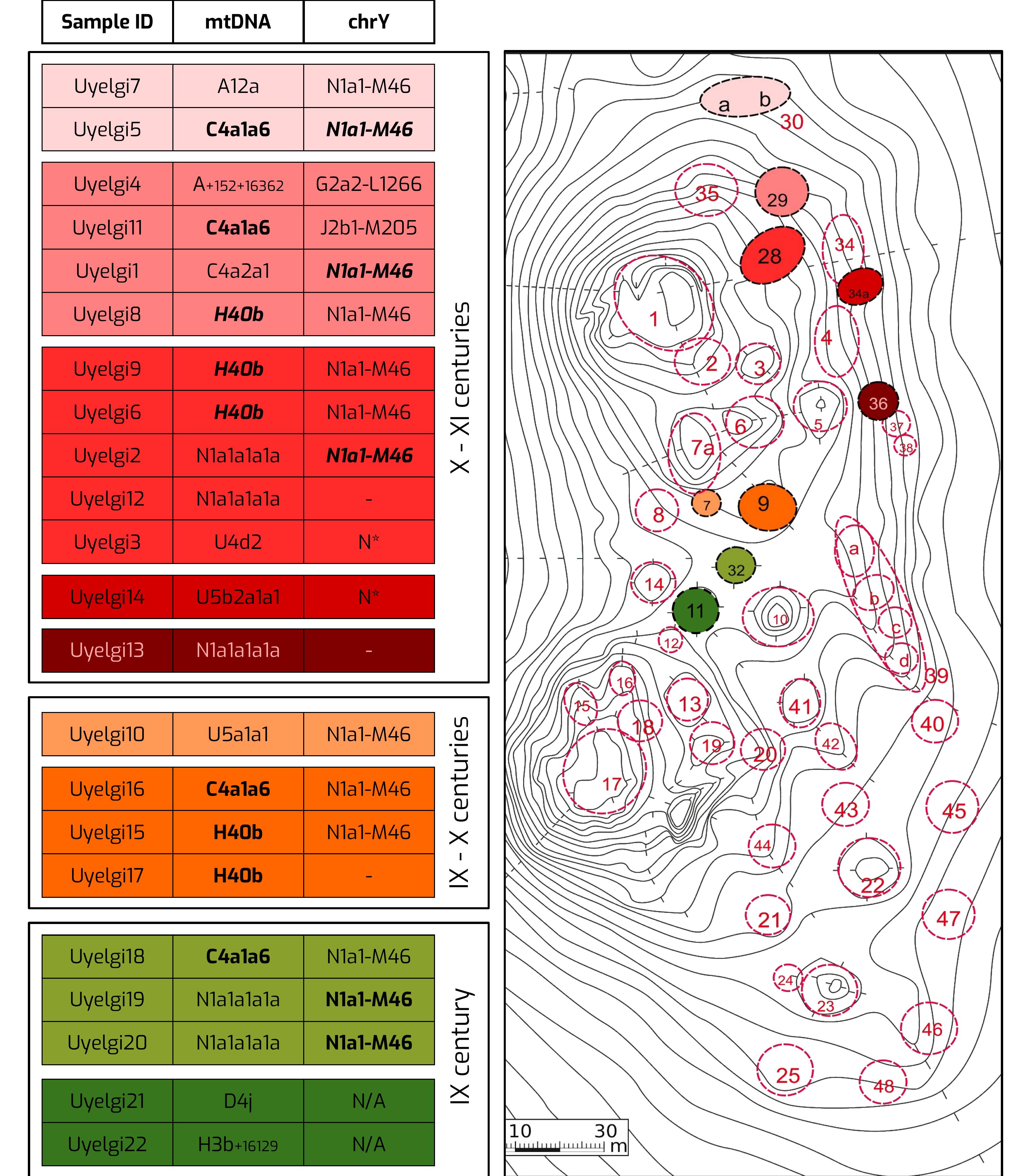The first results of our ancient DNA project aimed to investigate the population history of early Hungarians with the analysis of maternal and paternal lines were published in the journal Scientific Reports of the Nature publishing group within the framework of Hungarian-Russian scientific cooperation.
 Veronika Csáky and Anna Szécsényi-Nagy led the genetic studies, which involved the analysis of samples collected during the Russian phase of the Hungarian prehistoric archaeological research led by Attila Türk (Pázmány Péter Catholic University, Department of Early Hungarian and Migration Period Archaeology, Institute of Archaeology, ELRN RCH Early Hungarian History Research Group). Russian archaeological colleagues also participated in the preparation of the archeological chapters of the article.
Veronika Csáky and Anna Szécsényi-Nagy led the genetic studies, which involved the analysis of samples collected during the Russian phase of the Hungarian prehistoric archaeological research led by Attila Türk (Pázmány Péter Catholic University, Department of Early Hungarian and Migration Period Archaeology, Institute of Archaeology, ELRN RCH Early Hungarian History Research Group). Russian archaeological colleagues also participated in the preparation of the archeological chapters of the article.
In this publication, the Trans-Uralic cemetery which has the closest correlation with the conquering Hungarians’ archaeological remains (Ujelgi, late Kusnarenkovo culture, 9th-11th centuries) and four famous cemeteries in the western foreland of the Urals (Brodi, Sukhoi Log, Bartim, Bajanovo Nyevolino, and southern Lomovatovo culture) were genetically examined. The samples are from the Volga – South Ural region, which is considered important for the ethnogenesis of Hungarians, from sites that archaeologists have so far directly or indirectly linked to the ethnogenesis and migration of Hungarian ancestors.
The study analyzed a total of 36 anthropological samples from the Ural region (6-11th centuries) and 9 from the Carpathian Basin (Conquest Period, around the late 9-10th centuries), primarily focusing on uniparental markers (maternal - mitochondrial DNA, paternal - Y-chromosomal). In addition, complete genomic analyses of five samples from the Ujelgi cemetery were performed.
A mixed population was indicated from both a phylogenetic and phylogeographic point of view by the maternal lines of the studied samples. One of the significant findings was the presence of eastern elements found in the conquerors, which were also present in the groups from the studied region in Russia. With this result, a new light shone on the Central Asian origins of a significant part of the early Hungarians. In addition, a much more homogeneous picture was shown by the paternal lines: most of them belonged to the special N1a (N-Tat) type, which is characteristic of the Volga – South Ural region, the environment of the studied site. Furthermore, this was also a characteristic of some of the conquering men.
Veronika Csáky, Dániel Gerber, and colleagues identified several direct or indirect individual phylogenetic connections between the samples from Ujelgi and the Hungarian conquerors. All in all, a clear population relationship but at the same time complex population historical events were revealed. A basic population continuity was also indicated between the three chronological phases of the Ujelgi cemetery by the genetic results. This has not been archaeologically evident so far, due in part to the high degree of disturbance of the cemetery and the multiple burials in the kurgans. At the whole genome level, the population fits well into today’s trans-Uralic genetic environment, showing the closest relationship with Siberian Tartars and Mansi.
Based on the data of the cemeteries in the western foreland of Ural, consisting of only a few samples per site, the Cis-Ural population in some cases showed a phylogenetic relationship with the conquerors of the Carpathian Basin and was close to the pre-conquest population at the population level, however, no clear population relationship could be demonstrated. The reason for the similarity may be mainly the proximity of the cis-Uralic settlements of the Hungarians and surrounding people.
 In summary, archaeogenetic research confirms the significant role of the Volga – South Ural region in the ethnogenesis of Hungarians. By showing the biological connections, the knowledge and examination of the archaeological finds of Eastern Europe that are similar to the conquerors was also confirmed as relevant in the research of the early Hungarian history.
In summary, archaeogenetic research confirms the significant role of the Volga – South Ural region in the ethnogenesis of Hungarians. By showing the biological connections, the knowledge and examination of the archaeological finds of Eastern Europe that are similar to the conquerors was also confirmed as relevant in the research of the early Hungarian history.
As a result, the connections shown here can be further clarified and explored in more detail in the future with the involvement of archaeogenetic analysis of new cemeteries related to the supposed migration route of Hungarians and with the analysis of high-resolution whole genomes.
As a continuation of the project, our research group will publish the genetic results of other important, archaeologically significant Ural region cemeteries (Bolsije Tyigani, Tankejevka, Karanajevo) and subbotsi-type sites (Ukraine, Moldova), which are believed to be the remains of the historical settlement “Etelköz” of ancient Hungarians in the 9th century.
„Early medieval genetic data from Ural region evaluated in the light of archaeological evidence of ancient Hungarians” study is available on the webpage below.
www.nature.com/articles/s41598-020-75910-z
Further information: Veronika Csáky , Anna Szécsényi-Nagy , Attila Türk





